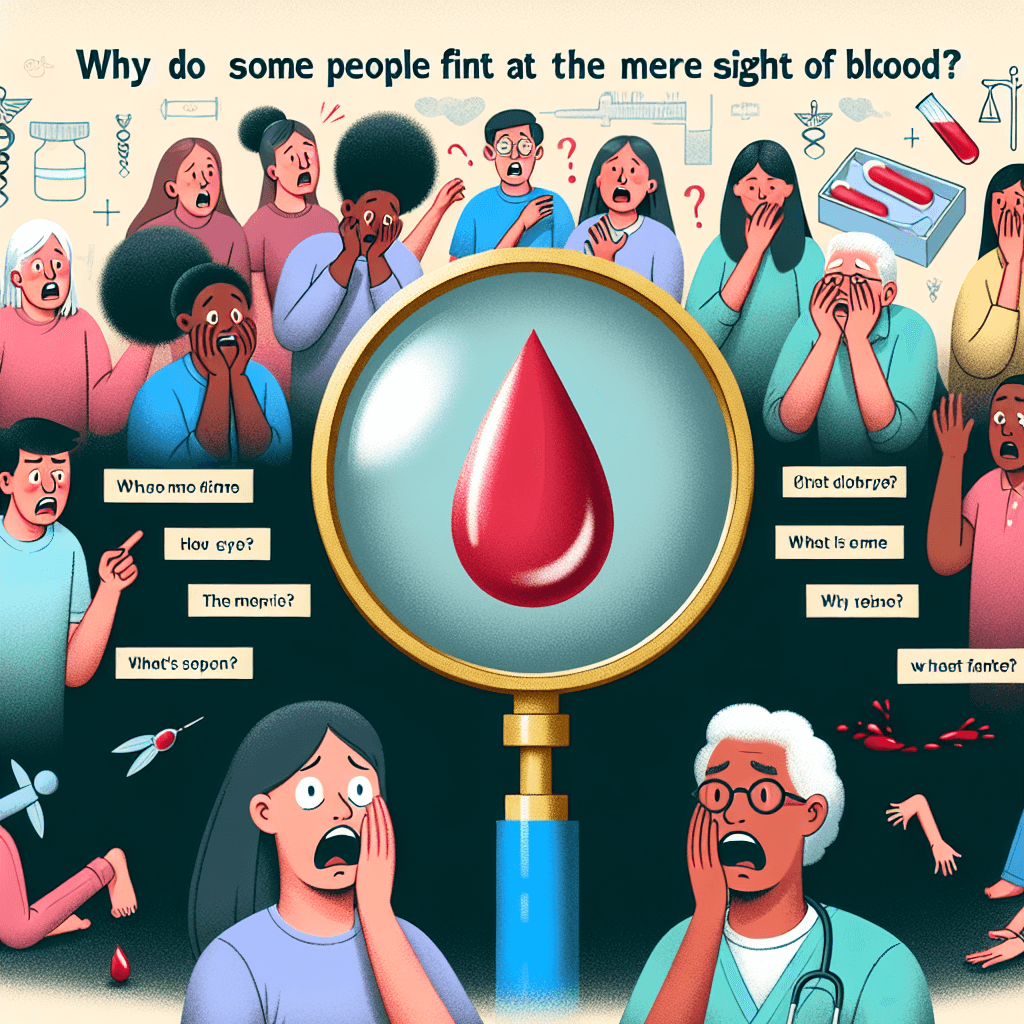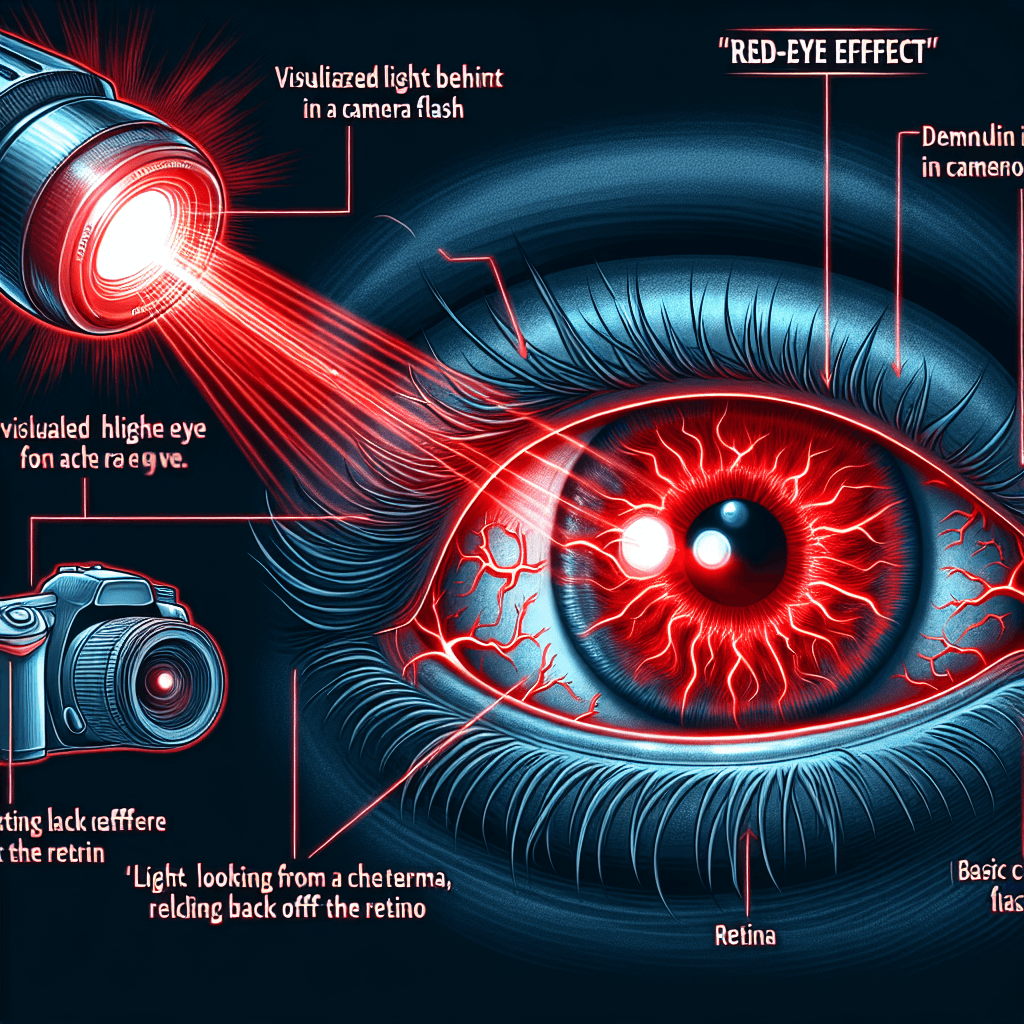Why do some people faint at the mere sight of blood
It’s not squeamishness, but a bizarre evolutionary misfire that causes your blood pressure to plummet and your world to go dark. We're diving into the fascinating science behind why some bodies choose 'faint' instead of 'fight' at the first sight of red.


Too Long; Didn't Read
TLDR: The sight of blood can trigger an overactive nerve response called vasovagal syncope. This causes your heart rate and blood pressure to suddenly drop, decreasing blood flow to the brain and making you faint. It's an extreme, misfiring fight-or-flight reflex that might have evolutionary roots.
Seeing Red: The Surprising Science of Why Some People Faint at the Sight of Blood
Have you ever watched a medical drama where a character dramatically faints at the first sign of a wound? Or maybe you’ve experienced that dizzy, weak-kneed feeling yourself after a simple papercut. While it might seem like a theatrical overreaction, fainting at the sight of blood is a very real and surprisingly common phenomenon. It’s not a sign of weakness but rather a fascinating, involuntary misfire within our nervous system. This post will delve into the science behind this extreme reaction, exploring the physiological chain of events and the evolutionary theories that might explain why our bodies react in such a dramatic way.
The Culprit: Unpacking the Vasovagal Response
The technical term for fainting at the sight of blood (or other emotional triggers) is vasovagal syncope. This complex-sounding name describes a simple, albeit dramatic, process involving your vagus nerve—one of the longest and most important nerves in your body, helping to regulate functions like heart rate and blood pressure.
When you experience an emotional trigger, like seeing blood, your body initially kicks into its "fight-or-flight" mode. Your heart rate and blood pressure might briefly spike. However, in people prone to vasovagal syncope, the vagus nerve overreacts to this spike. It sends a powerful signal to calm everything down—too powerful. This overcorrection causes a sudden and steep drop in both heart rate and blood pressure.
This rapid drop means less blood flows to your brain. Your brain, deprived of its necessary oxygen supply, effectively shuts down for a moment to protect itself. The result? You feel lightheaded, your vision might tunnel, and you lose consciousness, or faint. In a way, fainting is a brilliant protective mechanism; it forces your body into a horizontal position, allowing gravity to help restore blood flow to the brain almost immediately.
But Why Blood? Evolutionary Roots and Psychological Factors
So, why does the sight of blood trigger such a specific and potent response in some people? The answer likely lies in a combination of evolution and psychology.
-
An Evolutionary Advantage? One prominent theory suggests this reaction may have been a survival mechanism for our ancestors. Seeing blood—either your own or a clan member's—signaled a serious injury. Fainting would cause you to fall to the ground, which has two potential benefits. First, the drop in blood pressure could slow bleeding from a wound. Second, appearing lifeless or "playing dead" might make you a less interesting target for an attacking predator. In this light, the fainting response could be a deeply ingrained, primitive survival instinct.
-
A Learned Response: For many, the reaction is part of a specific phobia known as hemophobia (fear of blood). This fear can often be traced back to a traumatic event in childhood involving blood or injury. The brain then creates a powerful association, and the vasovagal response becomes a conditioned, automatic reaction to the trigger.
-
The Empathy Factor: Some research suggests that people with a strong sense of empathy may be more susceptible. When they see someone else bleeding, they may have an empathetic physical reaction so strong that it triggers their own vasovagal response.
Spotting the Signs and Taking Control
The good news is that vasovagal syncope rarely indicates a serious underlying health problem. Better yet, you can often prevent a full faint by recognizing the warning signs and taking immediate action.
Common pre-fainting symptoms include:
- Feeling lightheaded or dizzy
- Nausea
- Pale, clammy skin (a cold sweat)
- Blurred or tunnel vision
- Ringing in your ears
If you feel these symptoms coming on, the most important thing to do is to counteract the effects of low blood pressure.
- Lie Down: Immediately lie down flat and, if possible, elevate your legs. This is the fastest way to help blood get back to your brain.
- Try the Applied Tension Technique: If you can't lie down, try this. Tense the muscles in your arms, torso, and legs for 10-15 seconds. Release the tension for a moment, then repeat several times. This physical maneuver helps to raise your blood pressure and can ward off a faint.
Fainting at the sight of blood is a powerful reminder of the intricate connection between our minds and bodies. It’s not a character flaw but a hardwired physiological reflex, likely rooted in our evolutionary past. Understanding the "why" behind this reaction demystifies the experience and empowers individuals to manage it. So, the next time you feel woozy, you'll know it's just your vagus nerve overdoing its job, and you'll have the tools to stay in control.


